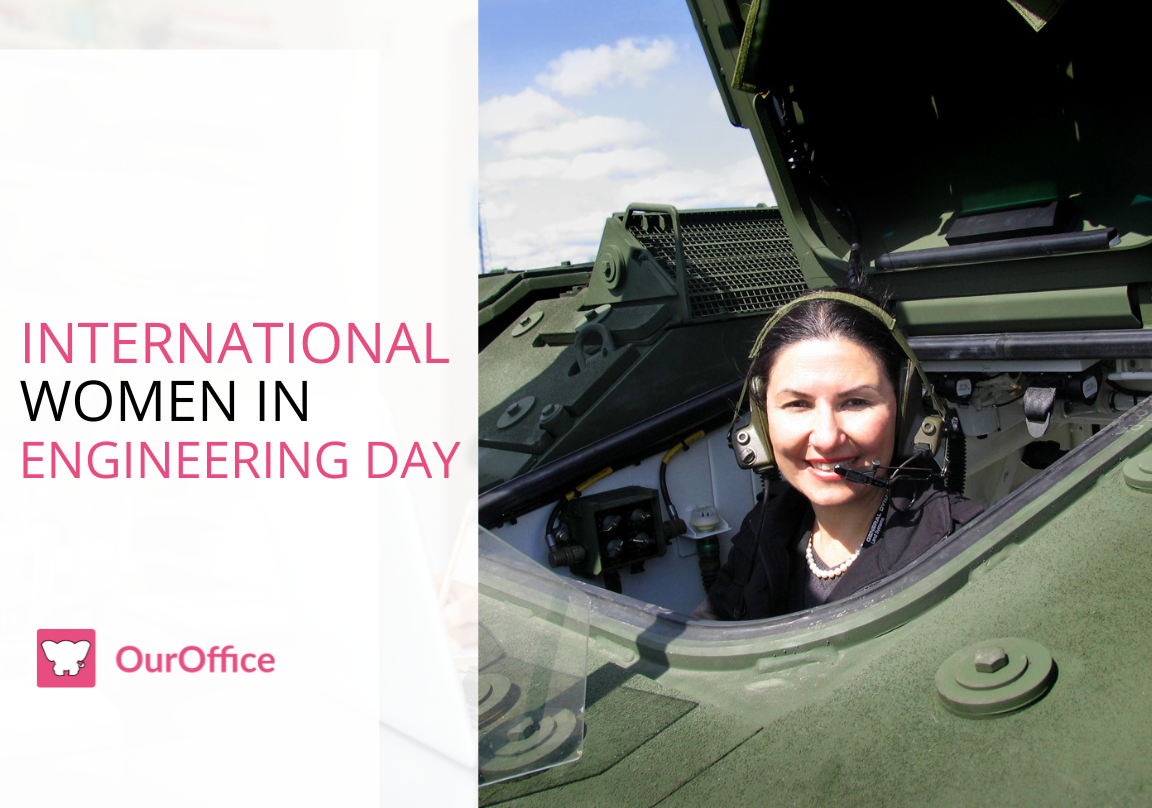23 Jun International Women in Engineering Day

My parents tell me that when I was a toddler and I saw the moon landing, I pointed to our black and white TV and announced that I wanted to do that! Years later, when I was an engineer at NASA, I applied multiple times to become an astronaut.
The drive to build things and my adventurous and curious spirit have always been part of me. I was blessed with super supportive parents who never questioned my audacious goals and odd behavior as a tomboy. But along the way, I must also credit my AP Chemistry teacher in my junior year in high school for encouraging me and even surprising me with an award at the end of the year, which solidified my career plans to be an engineer.
You see, to make the right career choice and be successful at it, beyond the natural desire and interest, young people also need two other key ingredients: support and guidance from their social and academic network, and encouragement that they are (or can be) really good at it!
So on this International Women in Engineering Day, I am doing my part in supporting and encouraging others by providing some background, data and actions that we can all take as allies of women in Engineering and all STEM fields.

History and Background
International Women in Engineering Day (INWED) is celebrated on June 23rd to recognize the outstanding contributions that women have made to the engineering field. INWED was founded in 2014 by the Women’s Engineering Society (WES) in the United Kingdom and has since grown into an international campaign, celebrating women engineers in over 100 countries around the world.
The day was established in order to raise the profile of women in engineering, encourage girls and women to consider engineering as a career, and to celebrate the
achievements of women engineers throughout history. The day also aims to promote diversity, equity and inclusion in the engineering field by highlighting the contributions of women and encouraging the participation of women in all areas of engineering.
Each year, INWED has its own theme which focuses on different challenges and barriers that women face in engineering, such as encouraging more women to enter the field, promoting equal opportunities, and creating a more inclusive workplace environment. The 2023 theme for INWED is “Making Safety Seen.”
Progress of Women in Engineering
While progress has certainly been made towards gender equity, there is still a long way to go. According to the Bureau of Labor Statistics, women currently make up only 14% of engineers in the United States. Meanwhile, the US is falling behind in terms of overall supply of engineers, to the tune of 4 to 1 per capita when compared to counties who are considered to be major competitors and adversaries of the US.
This underrepresentation of women in engineering means that the US is missing out on needed skills and valuable perspectives and ideas that can drive innovation. Some of the top industries for women representation in engineering occupations are:
1. Computer and electronic product manufacturing - 28.9% of engineers in this industry are women
2. Architectural, engineering, and related services - 14.6% of engineers in this industry are women
3. Transportation equipment manufacturing - 9.6% of engineers in this industry are women
There are also US companies leading the way in creating a more inclusive workplace for women engineers. According to the Engineering Workforce Commission, the top three engineering companies for women in the US in 2021 were Accenture, IBM, Northrop Grumman (my alma mater). These companies have demonstrated a commitment to diversity, equity, and inclusion and have implemented specific programs and policies to support women engineers.

For example, Accenture has implemented a Women in Technology program, which provides mentorship and career development opportunities for women at the company. IBM has pledged to have equal gender representation in its workforce by 2025 and has implemented a range of initiatives to support this goal, such as a global women’s network group, unconscious bias training and a Women in Science mentoring program. Northrop Grumman has implemented a Women’s International Network, which provides resources and support for women throughout their career journey.
Actions Allies Can Take
Here are four simple actions any organization can consider to prompt and support women in the Engineering field.
1. Be intentional and set specific goals: CEOs should be visible allies and state their intention around gender diversity with measurable and time-bound goals, such as increasing the representation of women in senior leadership or on project teams. This will empower their teams to cascade goals that can extend across the organization and at all levels and is the most powerful way to make sure the whole organization is aligned.
2. Ask, assess and update work policies: Leaders should ask women in general about their needs regarding flexible work policies. Women engineers have special needs because often as I experienced myself, travel to production and operational sites and customer locations may be required. Flexible work arrangements, such as remote work or flexible hours, and support services to accommodate the needs of working mothers or caregivers are helpful strategies to consider.
3. Assess key metrics with a gender diversity lens: Organizations need to assess key metrics such as representation, compensation, performance ratings and promotions with a diversity lens. If you have 30% women overall, but only 10% of your top leadership are women, it’s important to ask why and address the root causes. In a real case, an Engineering services company had 40% women in their “Exceeds Expectations” performance rating, but only 15% of their promotions in the same year were women. In another case, a medium size mid-west company had 38% women overall, but only 12% of their engineering team were women. These types of discrepancies should be investigated and reviewed to identify and implement the necessary actions.
4. Get involved in developing the pipeline: To help increase the supply of women engineers and women in STEM, organizations need to implement programs to get involved in their local community and schools (primary, secondary and higher education) to encourage women and provide role models that young girls and women can look to follow. As my friend and CEO, Andy Hove says, “If you are a CEO, you should not only actively recruit and hire women with an engineering background and education, you should work to get them into the field in the first place.”
As we celebrate International Women in Engineering Day, let us recognize the progress made towards gender equality in engineering while also acknowledging the work that still needs to be done. Let us also celebrate and honor the diversity of thought, experience, and perspective that women bring to the field of engineering.
For more or comments and to discuss neurodiversity in your workplace, please don’t hesitate to reach out to us here at DEI@ouroffice.io. We are here to support you in any way we can.




